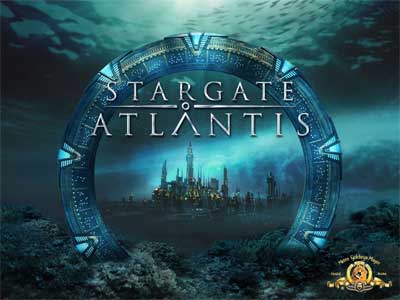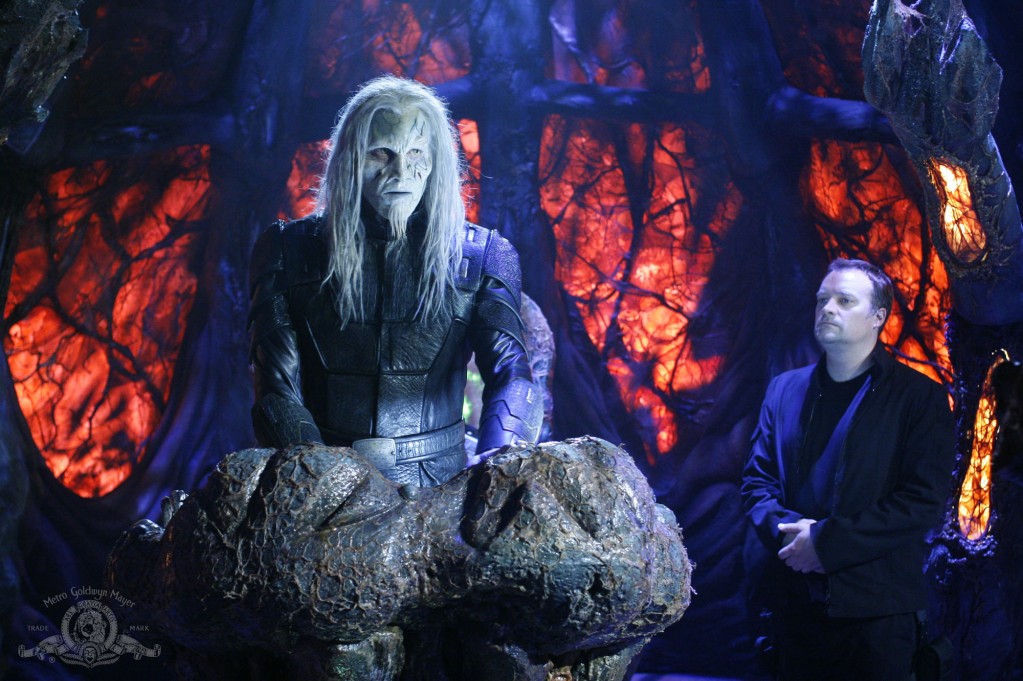Vampires and Snakes and Worms? Oh My! (Part Two)
 Welcome, travelers, to Atlantis! Yes, as in the Lost City of. And yes, it really did sink. So why isn't it underwater now? Well, perhaps you should ask Dr. Rodney McKay; he loves talking about the first and second and hundredth time he's saved this city...
Welcome, travelers, to Atlantis! Yes, as in the Lost City of. And yes, it really did sink. So why isn't it underwater now? Well, perhaps you should ask Dr. Rodney McKay; he loves talking about the first and second and hundredth time he's saved this city...
Anyway, while we're on the topic, I'll tell you a bit about Atlantis on our tour. The room we're currently standing in is called the gateroom because, well, it houses the stargate. Up these stairs is the control room for much of the city, including the stargate, cloak, and shield. The cloak and shield are self-explanatory--they hide and protect the city--but what's truly amazing is that Atlantis also doubles as a spaceship. There's a special chair from which Atlantis can be flown by someone who has the genes of the Ancients (the builders of the stargates and Atlantis). However, maintaining the thrusters and shield, which acts as an artificial atmosphere during spaceflight, requires substantial amounts of power, only achieved with a zero point module, or ZPM. What is a ZPM? Follow me and I'll show you.
This colorful group of crystals is a ZPM. Yes, I know, it seems crystals are used in all science-fiction as a power source, but once you meet this marvel, you'll understand why. Zero point modules are named thusly because they use zero point energy, which is an energy source infinitely cleaner and more efficient than Earth's fossil fuels. You see, ZPMs extract this vacuum energy directly from an artificial, stored region of subspacetime until it reaches maximum entropy. In other words, it borrows energy from another dimension--the corridor of spacetime used for superluminal travel--until the crystal is depleted, but that won't happen for another hundred thousand years. To quote Dr. McKay, "it's kind of like a miniature universe in a bottle." Oh, and if you mention that to him, I'll maroon you on a random planet. Anyway... In addition to hiding, protecting, and powering the city, ZPMs also enable intergalactic gate travel, because as we discussed back at Stargate Command, very few power sources can provide the energy necessary to create and sustain an artificial wormhole between galaxies. Impressed? You should be.
Before we continue, I need you to sign this waiver. Don't be alarmed. It's company policy and just states that Through the Wormhole Tours is not responsible for any injuries, or if you return home 40 years older than you were when you left...

Moving on! You're in for quite a treat. This is Todd. No, don't shake his hand! He's a Wraith, you see; his species feeds on the "life force" of humanoid beings using a sucker-like opening in their right hand, sort of like vampires without fangs. One awkward side-effect of the feedings, if you survive them, is that you appear to age. However, this is just a byproduct of a Wraith enzyme, used to prolong victims' lives in order to extract as much energy as possible.
The Wraith are a result of horizontal evolution, which means their species didn't evolve via reproduction. Instead, a very long time ago, an energy-sucking insect called the iratus bug latched onto a human and acquired human traits through the gene transfer that occurred during feeding. Eventually, this process led to the Wraith. But what's truly remarkable about the Wraith is their incredible strength and regenerative abilities. They are notoriously difficult to kill, as they heal quickly. This could be explained by stem cells, which are our body's technicians, repairing damaged cells. If Wraith have an overabundance of stem cells, that could account for their super-healing. But that's not all--Wraith also have tough skeletons, as is evidenced by their ability to withstand crushing pressures that would immediately kill a human. I postulate that Wraith bones are quite different from ours. Instead of containing hydroxyapetite, which accounts for the hardness of our bones, they substitute calcium carbonate or chitin, which makes up insect exoskeletons. Mixing chitin with calcium carbonate creates an incredibly tough compound. This is logical, as their physiology is heavily influenced by the iratus bug. Todd won't admit it, but he agrees with me. See? He's smiling. He won't hurt you, but I'd keep my distance from any other Wraith you encounter.
So now that you know the basics about Wraith, how about we follow Todd to his ship? It's called a dart, and it really is a very interesting piece of technology. Why yes, it does resemble a throwing dart. What a clever observation. Todd, stop smirking. You'll have to excuse him, he's still learning human manners.
The noteworthy thing about darts is that they possess beaming technology, which is similar to but slightly more rudimentary than the Asgard beaming technology aboard the Daedalus. The Wraith use high-intensity energy to beam up organic matter--whether it be humanoid victims or kin--, which is then stored as energy in a buffer. Then, when it's time to rematerialize, the energy's converted back into organic matter with the aid of the transporter transformer. Sounds complicated? Oh, it is. Actually, we had an incident a few years back that resulted in two Atlantis personnel being beamed up and only one of them rematerializing successfully. Of course Drs. McKay and Zelenka eventually solved the problem, but things around here were quite bizarre--yes, more so than usual.
Well, this concludes our tour of Atlantis. If you'll follow me to the gateroom, we'll make use of that nifty ZPM to return to Earth. We'll arrive at Stargate Command, but we have flights set up for those of you who came from out of state. On behalf of Through the Wormhole Tours and the staffs of both bases, I'd like you thank you for choosing us for all your interplanetary and intergalactic travel needs. And remember, please keep all body parts inside the gate at all times. We hope to see you soon!
Source:
1. Wright, B., and Robert C. Cooper. "Stargate Atlantis." 2004-2009.





